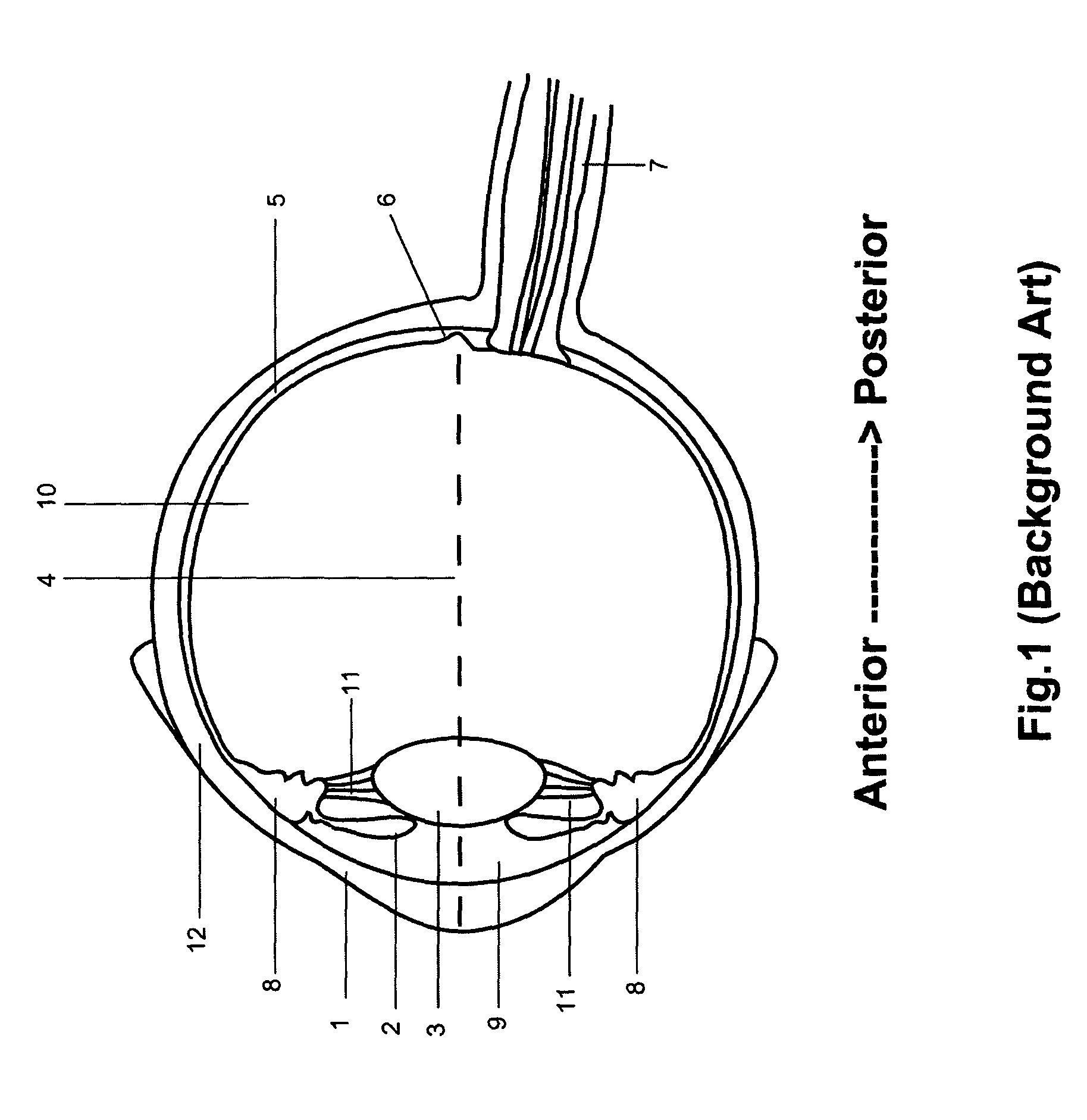Method and a system for laser photoablation within a lens
a laser and lens technology, applied in the field of opthalmology, can solve the problems of vision defects, loss of power of cialary muscles, poor focus of images, etc., and achieve the effects of reducing the coronal diameter of the lens, enhancing/improved the ability of the ciliary muscle to constrict and
- Summary
- Abstract
- Description
- Claims
- Application Information
AI Technical Summary
Benefits of technology
Problems solved by technology
Method used
Image
Examples
Embodiment Construction
[0025]In preferred general term, the present invention provides a method for ablating a presbyopic lens for restoring accommodation in human eye and a system thereof wherein a laser beam is directed obliquely to carry out multiple photoablations within the lens behind the iris and preferably near the edge or equator of the lens and / or in the vicinity of zonules to re-establish accommodation of the lens lost due to presbyopia. The laser beam according to the present invention has short duration and high-energy pulse to convert lens-protein into plasma.
[0026]Referring to FIG. 3, which shows a system according to the present invention. The system (100) comprises a means for surveying (110) to survey the lens and the structures anterior to the lens, a laser system (130) for ablating, within the lens, a means for monitoring and controlling (160) the photo ablating process in real time and a means to direct a laser beam (150). The means for monitoring and controlling (160) comprises a sur...
PUM
 Login to View More
Login to View More Abstract
Description
Claims
Application Information
 Login to View More
Login to View More - R&D
- Intellectual Property
- Life Sciences
- Materials
- Tech Scout
- Unparalleled Data Quality
- Higher Quality Content
- 60% Fewer Hallucinations
Browse by: Latest US Patents, China's latest patents, Technical Efficacy Thesaurus, Application Domain, Technology Topic, Popular Technical Reports.
© 2025 PatSnap. All rights reserved.Legal|Privacy policy|Modern Slavery Act Transparency Statement|Sitemap|About US| Contact US: help@patsnap.com



